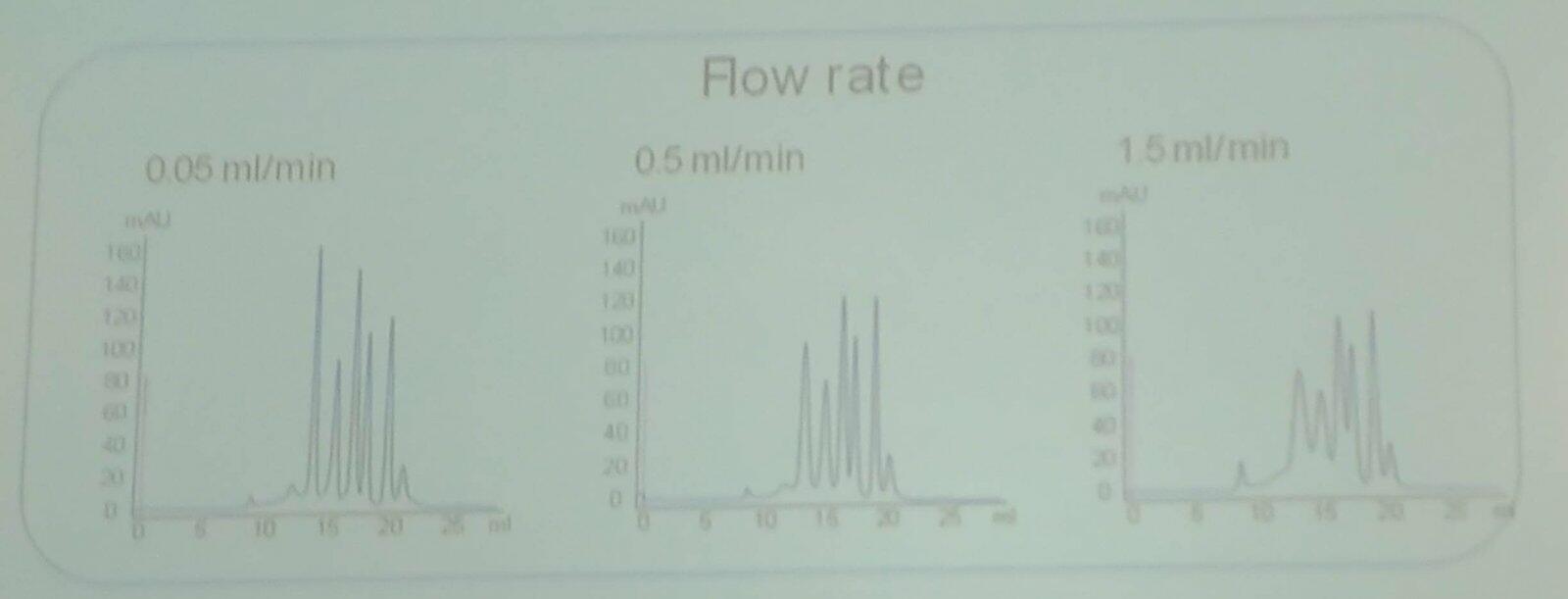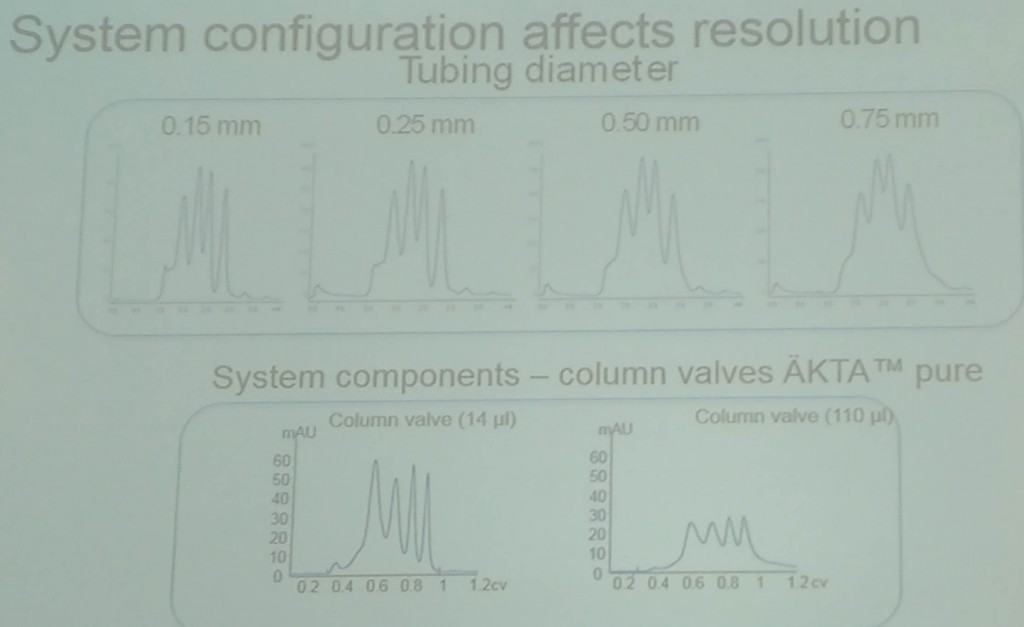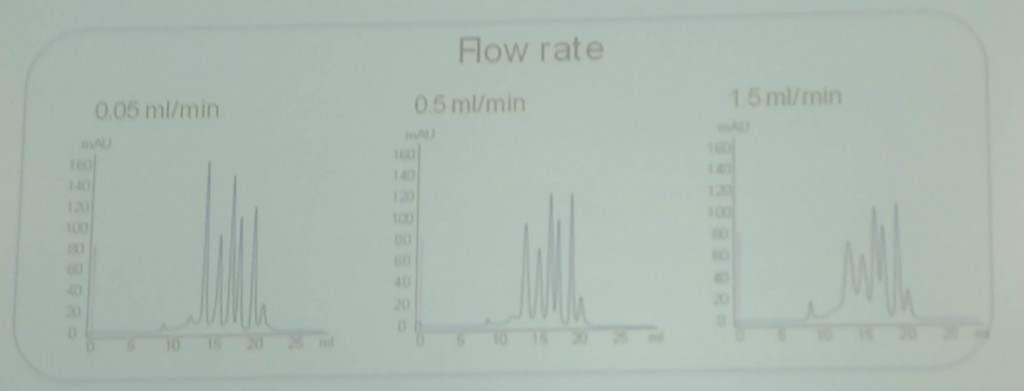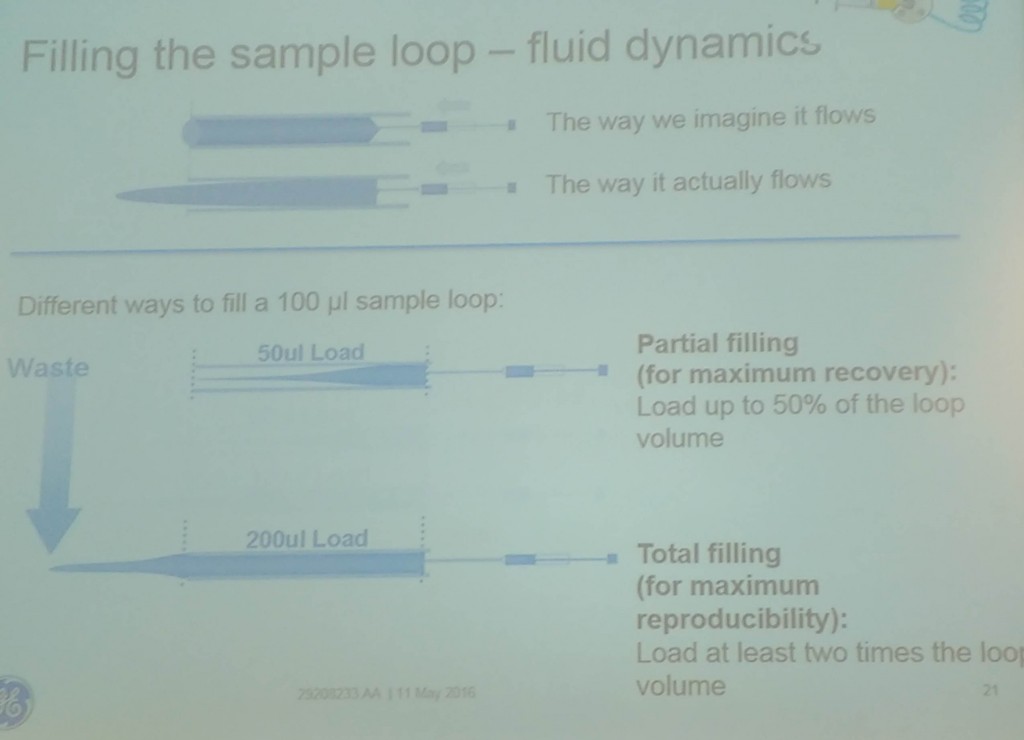Size Exclusion Chromatography Tips and Tricks

Size exclusion chromatography (SEC) is a technique that allows to perform molecular separation by size. Some common SEC applications are protein purification, protein-protein interaction assays, the analysis of protein aggregation processes and protein stability studies. Inger Salomonsson from GE Healthcare presented at Analytica very useful tips and tricks to improve SEC performance.
First, the system configuration must be optimized. A bad configuration can seriously affect resolution -the ability to separate the elements in the mixture-, specially on small columns. A small tubing diameter (0.15 mm) and column valve (14 uL) will give much better resolution than higher values. A system with no column valve and a 35 cm x 0.15 mm inner diameter capillary improves resolution up to 35% respect to a configuration with column valve and a 107 cm x 0.18 mm i.d. capillary.

Credit: Inger Salomonsson.
Flow rate also affects resolution: lower flow rates allow to obtain better results.

Credit: Inger Salomonsson.
Sample volume must be considered too. As a rule of thumb, the volume should be 0.5% of the bed volume for best resolution, and up to 2% of bed volume for preparative runs. When filling the sample loop, fluid dynamics should be kept in mind. The flow doesn’t advance equally at all points of the tube: it is faster at the center. As a consequence, when injecting one loop volume of sample, we are actually losing sample. Depending on what we intend to do, we can fill the sample loop partially or totally. For maximum recovery, we should fill only 50% of the loop. For maximum reproducibility, we should load twice the loop volume. Emptying the sample loop completely improves reproducibility too.

Credit: Inger Salomonsson.
Finally, some recommendations for column maintenance. In some conditions – in low temperatures, when using viscuous samples or buffers, or when washing with ethanol – the flow rate should be decreased. A 50% decrease when working in 20% ethanol or in a cold room will keep your column in good shape. Columns should be cleaned with NaOH every ten injections. If the column has lost resolution due to poor maintenance, its performance can be restored with two cleaning cycles consisting of two 0.5 M NaOH column volumes each.

Credit: Inger Salomonsson.
You can find more information in GE Healthcare’s manual of SEC Principles and Methods.
